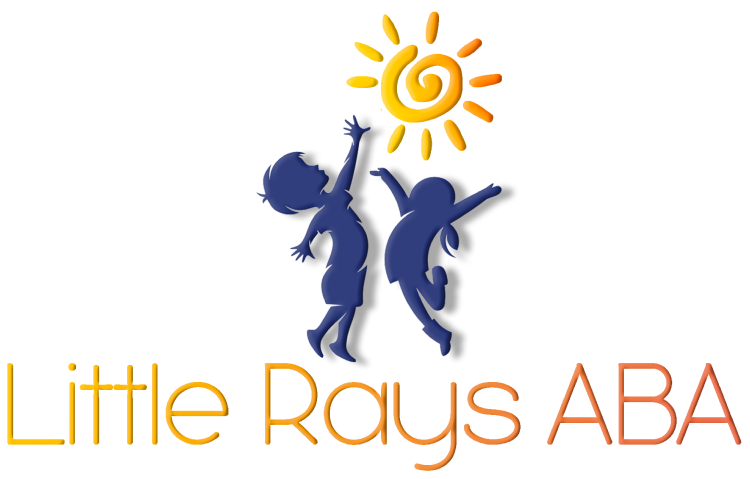The Role of ABA Therapy for Toddlers with Autism Symptoms
Autism spectrum disorder (ASD) is a condition that affects how a person develops. It often needs special methods to help young children grow. One of the best treatments is Applied Behavior Analysis (ABA). This method is organized and based on solid research. ABA therapy focuses on early help to increase skills. It works on areas like communication, social interaction, and daily living skills. ABA treatment is tailored to fit the needs of each toddler. It is a key way to support growth and bring out the best in children with autism.
Understanding ABA Therapy for Toddlers
Applied Behavior Analysis, or ABA therapy, is a scientific way to understand how children learn and behave. It provides special help for toddlers with autism spectrum disorder. ABA therapy looks at each child's unique needs, like struggles with communication or social skills. It takes complex behaviors and breaks them down into simple steps. By using positive reinforcement, children learn to feel more capable and confident. Techniques like modeling and prompting help keep their progress steady.
The therapy sessions are fun and educational for toddlers. Therapists use play-based activities that fit the child's development and goals. This can include storytelling, matching games, or singing together. ABA therapy turns structured help into a fun experience. Using this therapy early can improve how children communicate, interact socially, and develop important life skills. It helps them adapt and succeed at home, school, and in other places.
Definition and Core Principles
Behavior analysis is key to ABA therapy. It uses methods based on evidence to understand and change behaviors. Therapists look at how certain actions connect to their results. They then create plans to help encourage positive changes. A main idea is positive reinforcement. For instance, when a toddler says a new word correctly, they may get praise or a favorite toy. This makes it more likely they will repeat the good behavior.
ABA therapy can help with challenges from the autism spectrum. Issues like tantrums, aggression, or trouble communicating can all be handled with ABA strategies. The therapy includes step-by-step teaching that meets each child’s needs. Bigger goals are divided into smaller, reachable ones.
This way of learning helps kids stay consistent and adaptable. Over time, ABA therapy provides children with useful skills. This helps them navigate social and school situations better while reducing challenging behaviors. It also supports their overall growth and development.
Tailoring ABA to Individual Needs
ABA therapy is based on the idea that every child is different. The treatment needs to match their own goals and challenges. These goals can include improving communication, reducing problem behaviors, or enhancing social skills. Therapists find out what each child needs by using tests and watching their behavior.
The ABA team, made up of board-certified behavior analysts (BCBAs) and registered behavior technicians (RBTs), then creates a treatment plan. This plan is flexible and made to fit the child’s growth and what the family wants.
Furthermore, ABA services can happen in different places, like at home or in a clinic, depending on what the child needs. These options offer flexibility and structure, helping to apply therapy while developing skills and better behaviors. Tailored ABA therapy helps young children reach important milestones that can greatly improve their quality of life.
Key Benefits of ABA Therapy for Toddlers
ABA therapy has many benefits for toddlers. It helps them talk better and improves their daily living skills. Getting help early is a great chance to teach important social skills and good habits for life.
ABA also helps toddlers deal with problem behaviors like tantrums and aggression. It uses strategies that are backed by research. The focus is on functional communication and being flexible. This therapy prepares children to interact positively with others. It also helps them adjust better in social settings and schools.
Enhancement of Communication Skills
ABA therapy is great at helping toddlers learn to communicate their needs. It uses simple steps to break down language. This way, kids can slowly pick up new skills, like naming things, sharing their feelings, or asking for help.
Many toddlers with autism spectrum disorder find it hard to talk or don’t talk much. This can make them feel frustrated. ABA therapists try to encourage functional communication using positive reinforcement. For example, if a child asks for a toy using words, they get the toy as a reward for speaking.
This therapy also helps kids learn social skills. By using structured lessons and fun play activities, toddlers can learn to interact better with friends, caregivers, and others. This improvement builds their confidence and helps them communicate better in social and learning situations over time.
Improvement in Social Interactions
Navigating social situations can be hard for toddlers with autism spectrum disorder. ABA therapy helps make these interactions easier. Places like home, school, and the playground are important for learning for toddlers with ASD.
Therapists use methods like showing proper social interactions and breaking down social behaviors into smaller steps. For example, during guided playdates, a toddler might learn to share toys or take turns in a game.
By practicing and having support, children start to use what they learn in different settings. They become better at handling various social situations, such as starting conversations or keeping eye contact. This steady growth in social skills boosts their confidence. It also helps the child build good relationships with family members and peers in meaningful ways.
Development of Daily Living Skills
A key part of ABA therapy is teaching daily living skills that help make kids independent. Toddlers often start therapy needing help with life skills like toilet training and self-care. ABA therapy works to close these gaps using clear teaching methods.
Positive reinforcement is very important in helping kids learn these skills. For example, toddlers can get a reward for brushing their teeth correctly. This makes the activity fun and effective. Therapists teach them step-by-step, which helps them progress slowly and reduce any frustration.
Also, daily routines such as dressing, eating, and following instructions are shown and practiced in therapy sessions. By breaking these tasks into small and easy steps, toddlers learn key life skills. This supports their independence and helps them adjust at home and school.
Implementing ABA Therapy: Methods and Techniques
ABA therapy uses different methods and teaching styles that focus on what each child needs. Discrete Trial Training (DTT) gives structured chances to learn skills through practice. On the other hand, Pivotal Response Training (PRT) helps children learn in natural settings.
Natural Environment Training (NET) also supports skill growth in daily life. This helps toddlers use what they learn in various places. Each method plays a special role in making ABA therapy effective. It helps kids deal with challenges and gain important skills.
Discrete Trial Training (DTT)
Discrete Trial Training (DTT) is a teaching method used in ABA therapy. It helps toddlers with autism spectrum disorder (ASD) learn new skills and manage their behavior. DTT uses repetitive instruction along with positive reinforcement. This method works in different settings like home and school. Each trial involves a clear request, a child's response, and quick feedback. This way, children stay engaged and make progress. DTT supports the development of social skills and improves the overall quality of life for young learners.
Pivotal Response Training (PRT)
An effective way to boost engagement is pivotal response training (PRT). This method helps toddlers with autism spectrum disorder (ASD) learn new skills in functional communication and social interaction. PRT uses positive reinforcement that fits individual goals. This helps keep motivation high and reduces challenging behaviors during therapy sessions. By using daily routines and natural settings, PRT allows children to practice skills they learn in different places. Active involvement from caregivers and clinicians is essential. This approach not only improves the quality of life but also helps with behavior management.
Natural Environment Training (NET)
Natural Environment Training (NET) uses real-life situations in ABA therapy sessions. This helps children learn important social skills and daily living skills. Being in natural places, like at home or in the community, makes interactions more meaningful. This approach also focuses on involving families, which helps kids use their skills in different settings. Caregivers and ABA therapists work together to make special experiences that support functional communication and good behavior management. This helps kids become more independent and improves their quality of life.
The Role of Parents and Caregivers in ABA
Parents and caregivers are very important in helping ABA therapy work even outside of sessions. Working together with ABA therapists helps build family dynamics and ensures the toddler keeps making progress.
In addition, caregivers can use behavior management techniques at home. This should be done with positive reinforcement to encourage good actions and lessen problem behaviors. By being involved in their child’s path, caregivers can create a strong base for their toddler’s growth.
Collaboration with Therapists
Family involvement is very important when parents work closely with ABA therapists. Therapists help caregivers learn how to support their child's skills at home between therapy sessions.
When caregivers work with the ABA therapist, they can create a smooth connection between therapy and everyday routines. This is very important for helping children use their skills in real life. For instance, if social interaction is a main focus in therapy, parents can encourage playdates at home. This promotes steady growth.
Working together like this creates a helpful environment. It shows that being actively involved can enrich the child's experience. It also helps combine therapy goals with home life easily.
Strategies for Home Reinforcement
Strategies for home reinforcement help ABA therapy help beyond regular sessions. Caregivers can use positive reinforcement to manage behavior in everyday family life.
Activities focused on behavior, like creating routines, giving small tasks, or praising goals that are met, are very important. For example, rewarding a child when they successfully put on their shoes or brush their teeth helps them become independent and reinforces good behaviors.
When parents, ABA therapists, and the child’s needs work well together, it creates more chances for learning. This teamwork helps the child adapt and grow in many areas of life.
Conclusion
In conclusion, ABA Therapy is a strong method backed by proof that can greatly improve the lives of toddlers showing signs of autism. It looks at each child's individual needs and uses different ways to help them grow in a way that fits them best. ABA encourages important skills like communication, social interaction, and daily living. It also creates a rich environment where they can thrive. Parents and caregivers play a key role in this. Their teamwork with therapists helps reinforce learning and builds a supportive home atmosphere. As we deal with the challenges of autism, using the ideas of ABA Therapy can lead to better future opportunities. If you have more questions or need personal tips on starting ABA Therapy for your child, don't hesitate to get in touch with us for help. Your child's path to development and independence is just one conversation away.
At Little Rays ABA, we believe that a well-prepared home environment is key to maximizing the benefits of in-home ABA therapy. Our experienced team helps families set up spaces that are conducive to learning, with strategies tailored to your child's needs. From organizing materials to setting clear routines, we guide parents every step of the way. Ready to take the first step toward positive change? Contact Little Rays ABA today and let’s create the perfect home environment for your child’s success.
Frequently Asked Questions
What is the best age to start ABA Therapy?
ABA therapy works best when started early, ideally during toddler years. Research shows that beginning therapy between 18 months and five years old helps improve growth and development the most. By focusing on the challenges of autism spectrum disorder early on, ABA treatment helps children reach important milestones in both therapy sessions and everyday life.
How long does it typically take to see progress?
Progress timelines in ABA therapy can differ depending on the child’s treatment plan and how often therapy sessions occur. Some changes may be seen in just a few weeks, while reaching other important goals could take months of reinforcement. It is important to be patient and committed to the process to see real improvement.
Can ABA Therapy be combined with other treatments?
Yes, ABA therapy can work well with other treatments like special education or occupational therapy for children. When used together, these therapies improve learning and focus on different developmental goals in a well-rounded way. Working together with ABA services and other therapies makes sure that the child gets a customized plan that suits their specific needs.
Related Posts





